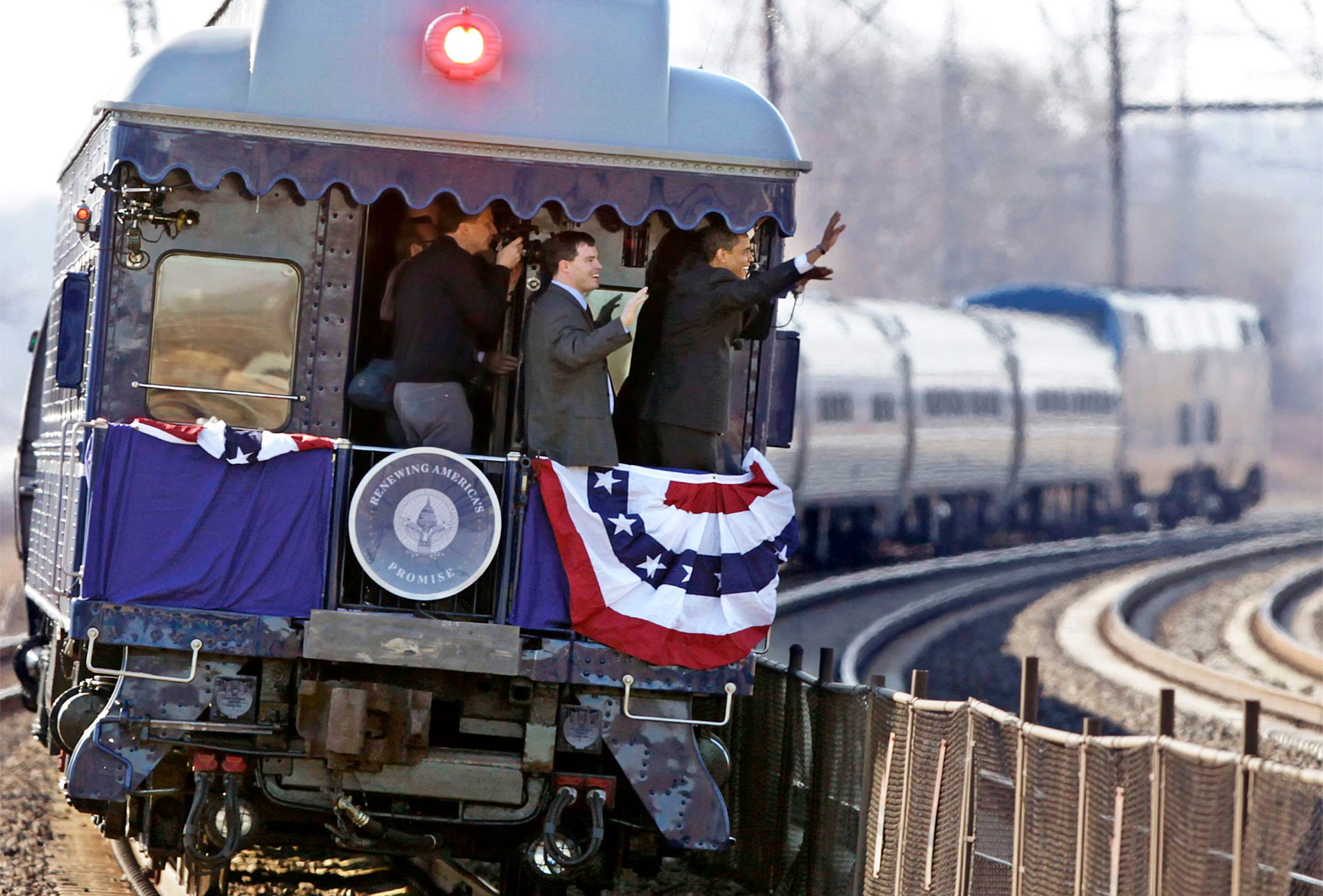We’ve done some in-depth reporting on the anatomy of a Presidential motorcade, as well as on the inner sanctum of Marine One, the special MV-22 Ospreys that accompany it, and the other VVIP helicopters on alert to evacuate key decision-makers from Washington DC. Now, we venture into the wonderful history of Presidential trains.
Trains have long been a fixture on Presidential campaigns, and for nearly a century, they were how sitting Presidents canvassed the country. But the first five Presidents never even rode on a train, let alone had one dedicated to their use.
The first Presidential candidate to use a train for campaigning was William Henry Harrison, who ran for President, unsuccessfully, in 1836. Then, in 1841, as President-elect, Harrison became the first to use a train to ride to his inauguration.
Two decades later, President Lincoln set a new standard for the White House’s utilization of the rails. From the time he was voted into office, Lincoln put trains to use for the purpose of consolidating support for his policies and to reach Americans and Union soldiers directly. Lincoln even signed legislation that initiated the transcontinental railroad.
During Lincoln’s time in office, a special executive coach dubbed United States was ordered to be built just for the President, although he supposedly detested the project. Lincoln was averse to luxury and what it signaled to his constituents during a time when the country was ravaged by internal warfare.

The only time he rode in it was after his assassination, as the car was the centerpiece of the “Lincoln Special” funeral train that brought his body back to his hometown of Springfield, Illinois. It was a time of national mourning, and the train acted as a tangible nexus between the devastating headlines and the American people who were so affected by the loss. The car was not preserved after acting as Lincoln’s rail-bound hearse, and it was supposedly was lost in a fire years after its melancholy debut.
The construction of this custom train car marked the first custom mechanized vehicle specifically built for the POTUS, which began a trend that has broadened remarkably in the last 150 years since. In some ways, it’s the great granddaddy of the Presidential limousine, Marine One, and Air Force One.

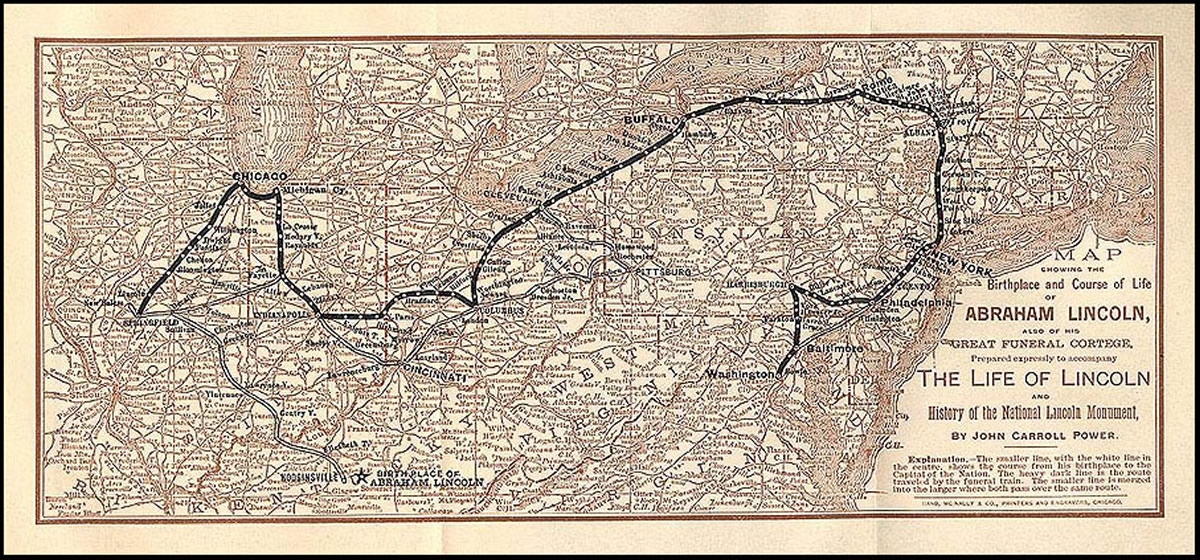
The Presidents and Presidential candidates that followed used trains constantly for transportation and promotion; some even died right before getting on a train (James Garfield). Yet Franklin Delano Roosevelet, who used trains extensively on his way to being elected in 1933, and his beloved U.S. Car No. 1 rose to prominence during World War II.
U.S. Car No. 1 was actually built in 1928 by the Pullman Company, and was originally named Ferdinand Magellan. It was one of six similar custom cars, all named after the world’s great explorers.

The car was acquired by the government and refitted in 1941 for the wartime President’s use, after which it became the heaviest railcar ever built in the entire United States, weighing in at 285,000 lbs. During its refitting, it was armored with 5/8-inch steel plating on its roof, sides, and floor, and three-inch bulletproof glass windows were installed where the standard windows had been. Two escape hatches were also installed. It was a rolling fortress that reflected the extreme security considerations of the time.
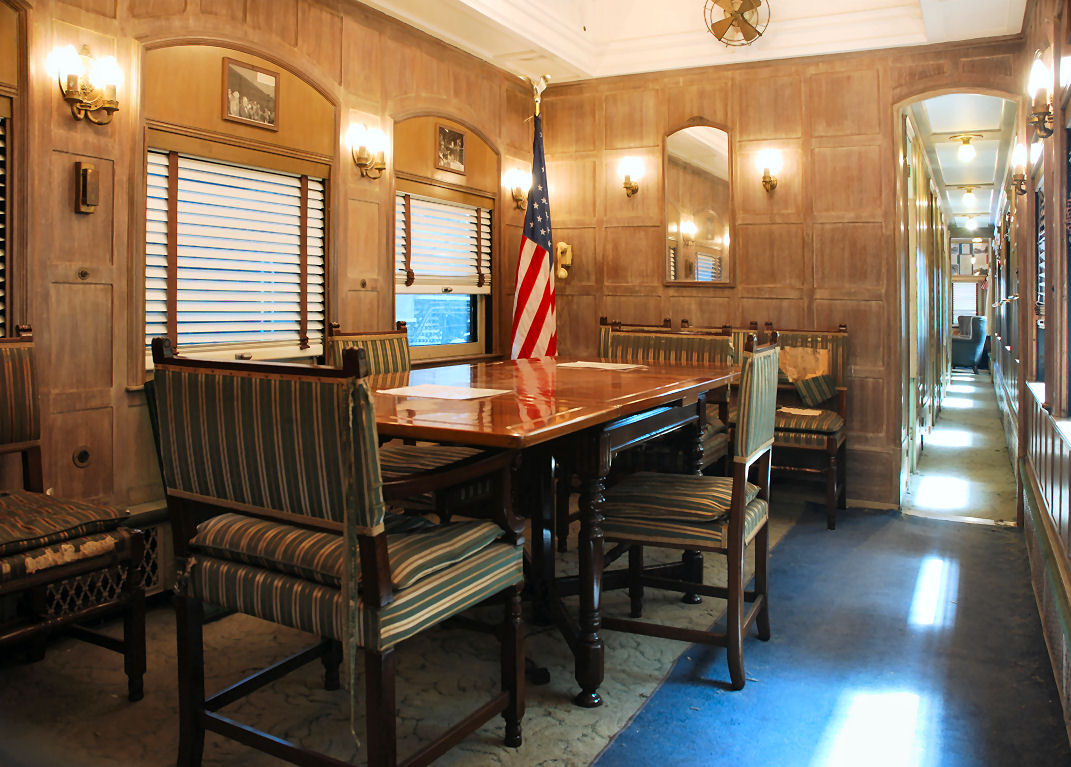
The interior of the remodeled U.S. Car No. 1 had a presidential suite, two guest rooms, a dining room that also served as a conference room, and an observation lounge that Roosevelt and his staff could utilize during long trips. It was also extremely luxurious and had telephones in most rooms, which was unheard of at that time.
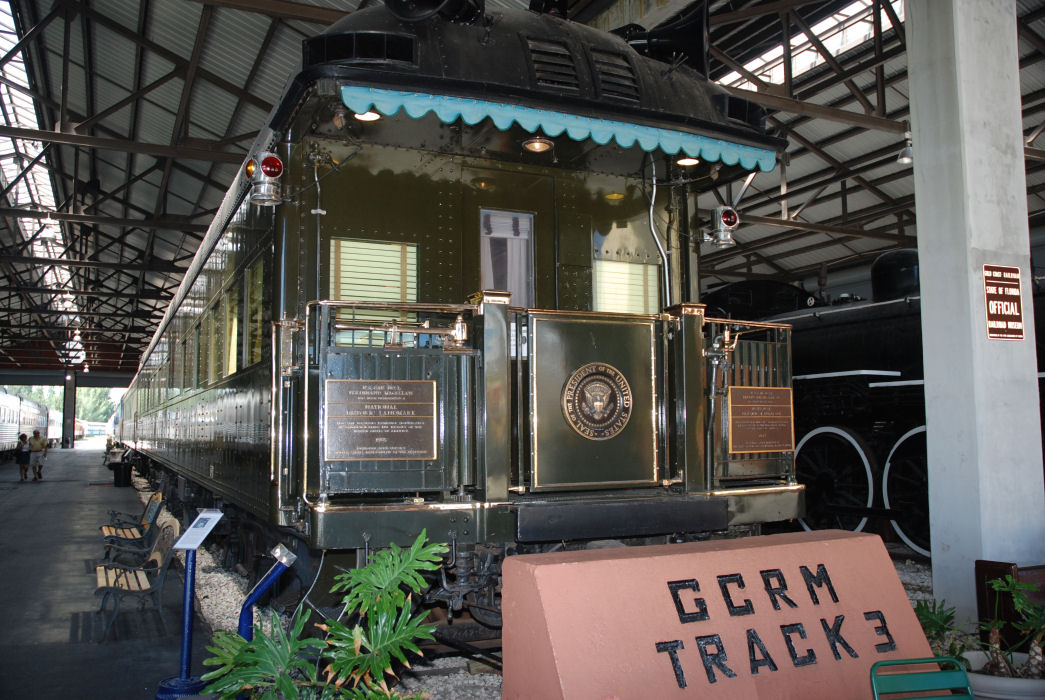
Communications were facilitated by a converted hospital car that had incredibly high-tech radio gear installed so the President could stay connected at all times. A second converted hospital car was also part of the train. It was used by the President’s Secret Service protection detail and included bunks, a kitchen, a bathroom, and a lounge area. The code name for these two cars was “Crate.” An oversize baggage car would often carry two sedans and two convertibles for motorcades, and other cars could be added, like ones carrying the press and other aids for high-profile rail missions.
The outside of U.S. Railcar No. 1 had the word “Pullman” simply painted on its side, allowing it to blend in with other train traffic during secretive travels. The Presidential train used the callsign “POTUS,” with the Secret Service calling it “City Hall,” during operations, and had the right-of-way whenever and wherever it traveled, just as Air Force One and the Presidential Motorcade have today.
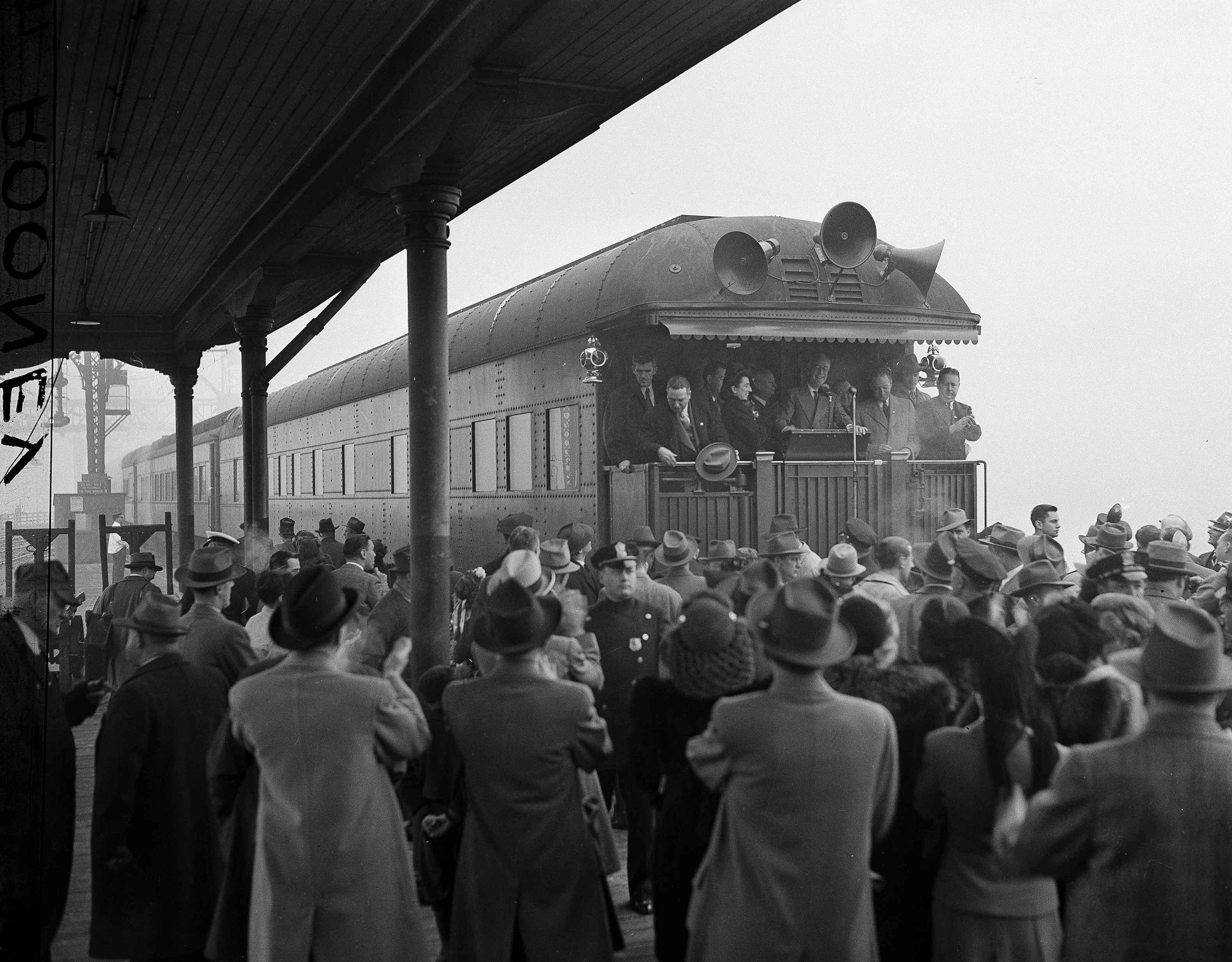
Many famous people rode in the President’s car, including Winston Churchill, and key war planning was done in its conference room. FDR used the car extensively for his 1944 campaign, setting up shop right on the car’s elevated rear platform. Loudspeakers were installed on its roofline for this purpose, a signature feature on previous campaign cars used by Roosevelt. The train allowed FDR, who suffered from polio, to make public appearances under controlled circumstances, as health concerns had loomed heavily over his candidacy. A special wheelchair was also constructed for FDR to use while on the U.S. Car No.1.
Moving the President on the rails was an intricate affair, with one railroad expert stating:
“Special instructions were issued so that no passenger, freight or switching moves would interfere with the movement of the special. Freights had to clear 30 minutes in advance and be at a standstill while the special passed. This was regardless of direction or track. If passing on adjoining tracks, conductors were instructed to insure against loose doors and other possible projections. Division engineers had to arrange for inspection of tracks, interlockings and drawbridges. Drawbridges could not be opened within 30 minutes of arrival of the train. In addition, car inspectors rode the train, state police monitored grade crossings and platform access was limited. It must have been a nightmare for the operating personnel who still had to move all the regularly scheduled trains.”
Like Lincoln, the Presidential railcar also was part of the rail procession that delivered Roosevelt’s body back to his home town after his sudden death in 1945. In all, FDR had traveled nearly 250,000 miles on the rails during his presidency.

Following FDR’s death, Harry Truman continued to utilize U.S. Car No. 1. This included using it for a 31,000-mile whistle-stop tour of the US during the 1948 Presidential Campaign (although he bemoaned its slow speed). He demanded the train be run at 80 mph whenever possible, double the speed of Roosevelt’s liking.
The heavy train car and its moderate pace helped to further solidify air travel as the future of medium-range presidential transport, with Truman increasingly opting to use the C-118 Liftmaster dubbed Independence instead of going by rail. The massive increase in the number of large airfields after WWII also helped facilitate this transition.
Still, U.S. Car No. 1 kept on chugging down the tracks right into the Dwight D. Eisenhower administration. But by the mid-1950s, rail travel was increasingly becoming a regional commodity, with the White House putting the first aircraft to use the callsign Air Force One into service, a Lockheed Constellation named Columbine II, for most Presidential travels.
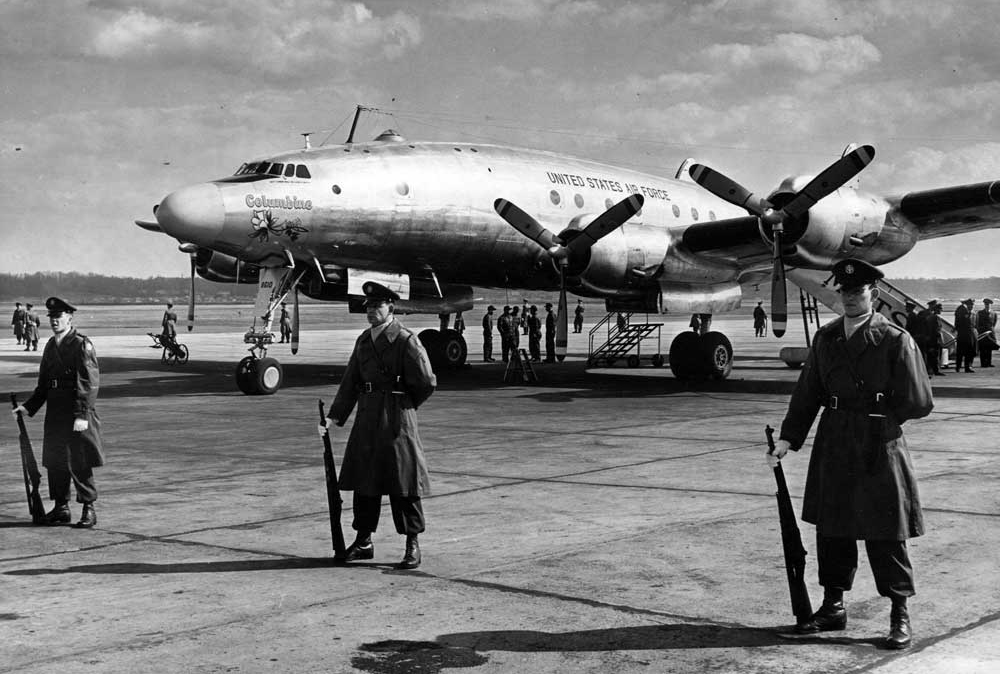
The last use of U.S. Car No. 1 by the White House was by First Lady Mamie Eisenhower, who took it to christen the world’s first operational nuclear submarine, the USS Nautilus. Eventually, the historic car was retired to the Gold Coast Railroad Museum in Florida, where it remains on display today. Crate was kept on hand longer, although by the end of the 1960s its days as an operational tool had ceased.
Although the retirement of U.S. Car No. 1 marked the end of Presidential train usage as a primary form of transportation, it remained a secondary one for special occasions. Trains allow Presidents and those running for president to not only get closer to voters and constituents compared to arriving on Air Force One, or a campaign plane, at some locked-down airport, but they also bring a heavy dose of nostalgia to a campaign. This has not been lost on Presidents Nixon, Carter, Reagan, Bush (41), Clinton, Bush (43), and Obama, all of whom have leveraged rail travel for political purposes.
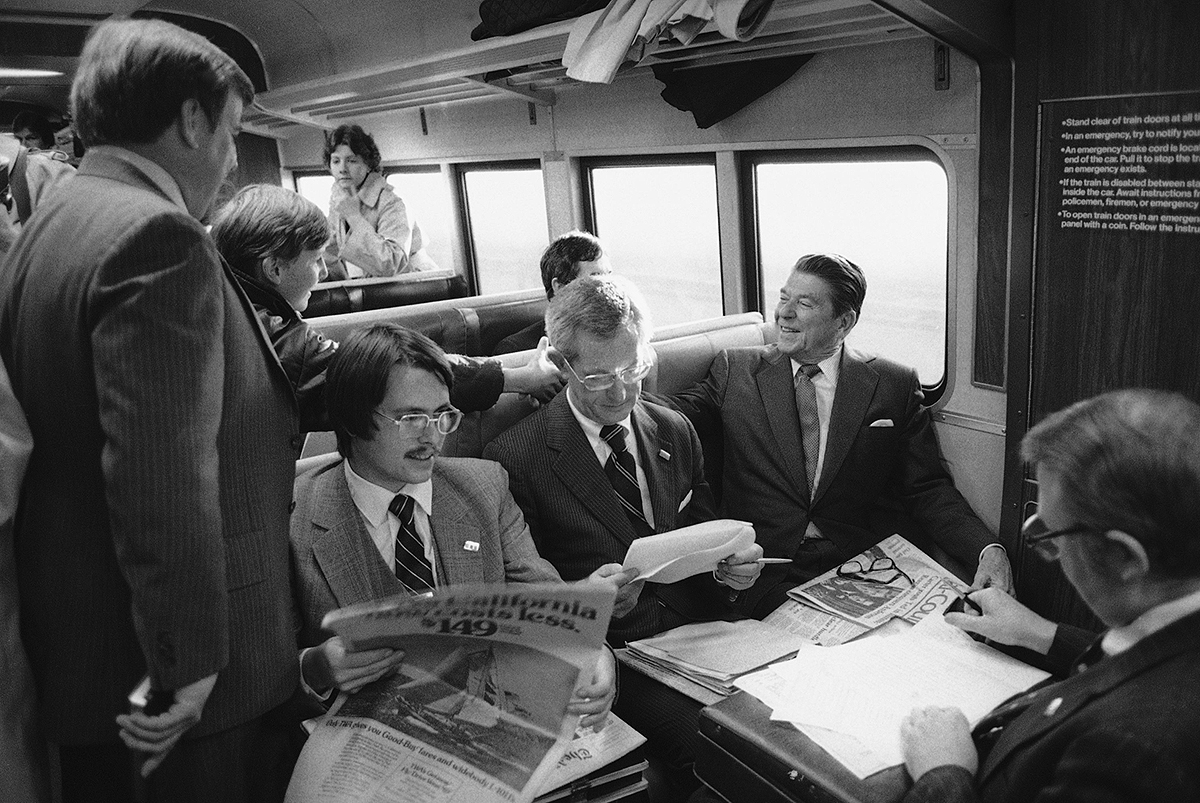
Presidents Jimmy Carter, H.W. Bush, Bill Clinton, and Barak Obama all used the same historic train car, the gorgeous, deep-blue Georgia 300, for high-publicity trips. Obama has actually used it multiple times, most famously to retrace Lincoln’s inaugural route as a major source of symbolism for his own inauguration in 2009.
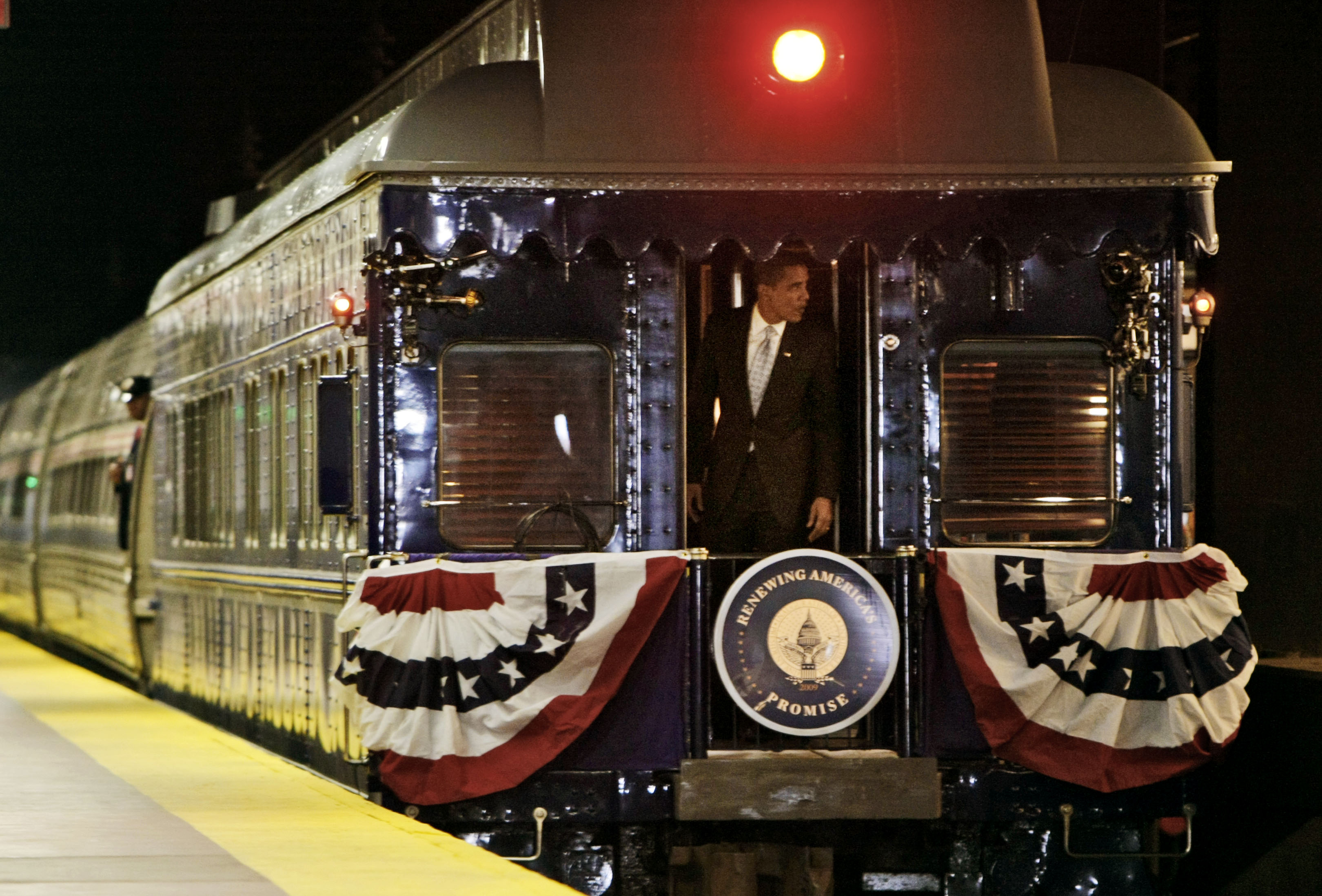
In recent years, the Secret Service has also used trains as novel escape vehicles during high-risk Presidential visits. During the 2004 Republican National Convention in New York City, two separate “escape trains” were staged by the Secret Service to whisk the President away to New Jersey via rail in the case of a terrorist attack or other catastrophe. One of the trains was placed under Madison Square Garden, and the other under the Waldorf Astoria hotel where the President stays. In fact, the same scheme was used multiple times—one in particular during the UN General Assembly.
The Waldorf Astoria’s secretive railway platform and track that connects it with Grand Central Station and Penn Station has been something of an oddity for some time, and it has been used by the President before. FDR used it to easily come and go from New York, and in spectacular fashion. He would literally be staged in his armored Pierce Arrow limousine inside the modified baggage car that carried it, and would be driven right onto the platform, into a massive elevator, through a garage, and out onto the New York streets. This was just one more measure that helped hide from the public the debilitating effects of polio on Roosevelt’s body. A mysterious car, thought to be the very same one that carried FDR’s motorcade, remains abandoned near the platform to this very day.

Although Donald Trump is known to have a serious affinity for air travel of all types, owning his own mini-fleet of S-76 helicopters to move him from point to point when his 757 or Citation X won’t do, candidate Hillary Clinton has used trains while campaigning in the past. In 2008 she used a converted Amtrak train for a five day whistle-stop tour of the Midwest and Northeast. So, who knows, maybe she will put the rails to use in the last 90 days before the election—or even after that, should she be voted in as the 45th President of the United States of America.

Contact the author: Tyler@thedrive.com
